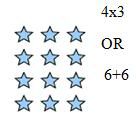Day 6 - 31st August 2011(last lesson of the module)
Hot park

Another mistake teacher commonly make is when talking about weight – "How much does
this weigh?", instead we should say, “How heavy is this?”. When using non standard measurement we must always say, "This rod is about .....paper pins long.
Height of 4 stairs - 4 X13.5
Volume and Capacity –
Capacity is used to refer to the amount that a container will hold.
In these six lesson I have gain so much knowledge of teaching the children. I too have learned the common mistakes made by most teachers. Dr. Yeap, you have covered a lot of materials and included many worked examples.I have learned that Math is about problem solving. I also learned that the teacher is crucial to a student's success. The teacher must know several ways to explain certain concepts. In school I never had a teacher that I could understand their teaching method. There are several things I never thought about which I learned in your class.
Thank you for the wonderful 6 days.
Lesson 22 - Assessment
We learned about assessment today.
Most of us have the tendencies to say Problem Sums. I learned it is better to say it as word problem.
We ask children to make up a word problem so that we can see that learners have a
procedural and conceptual and convention understanding. We must teach conventional knowledge explicitly.
procedural and conceptual and convention understanding. We must teach conventional knowledge explicitly.
I can assess a child to see if he can calculate. Does he understand calculation? If yes, Does he
also has conceptual understanding.
also has conceptual understanding.
We need to assess the child on the strategy he uses. Sometimes we can use the paper pencil
method and sometimes it is better to use the interview or oral test method. Some may not be able to draw but know the answer and another child maybe able to draw then the instrument is not valid because the child has the same ability but different score.
method and sometimes it is better to use the interview or oral test method. Some may not be able to draw but know the answer and another child maybe able to draw then the instrument is not valid because the child has the same ability but different score.
Hot park
Using Arrays to Explore Numbers
Arrays are useful models for multiplication. An array is formed by arranging a set of objects into rows and columns. Each column must contain the same number of objects as the other columns, and each row must have the same number as the other rows.
The following array, consisting of four columns and three rows, could be used to
represent the number sentence 3 x 4 = 12.
represent the number sentence 3 x 4 = 12.

Many ways of counting the pots of plant. (Example given by Dr. Yeap)
The Basic way of counting - Children can count 1, 2, and 3 and so on
Advance way of counting - 7 X 5 =
35 (Multiply the number of rows)
Skip counting 5, 10, 15 …
35 (Multiply the number of rows)
Skip counting 5, 10, 15 …
Skip counting 7, 14, 21 …
Repeated addition 7+7+7+…
Counting in 10’s
If the child is counting in two, teachers need to see," Do they face difficulty". Do they get blocked or do they have strategies to go ahead and count. This is a way of assessment.
Rate situation is a situation where not all problems can be multiply. Rate is not constant.
We learned about International Standard of Measurement and the Imperial measurement
Another mistake teacher commonly make is when talking about weight – "How much does
this weigh?", instead we should say, “How heavy is this?”.
Time has 2 concepts – Time as a point and Time as duration
It is advisable to use an analogy clock.
Teach children time relating to event. Look at the time relating to time everyday events
We learned that when we test children on time getting them to draw the hour and minute hand
is the wrong assessment to use we should instead use the interview method.
is the wrong assessment to use we should instead use the interview method.
Lesson (23)-Height of the MRT Stairs.
The height of each stairs looked the same but when we measured we found that 4 stairs in each
block of stairs were not the same and they measured 13.5cm as compared to the rest 14.5cm. The calculation is below:-
Total number of stairs 62block of stairs were not the same and they measured 13.5cm as compared to the rest 14.5cm. The calculation is below:-
Height of 4 stairs - 4 X13.5
Volume and Capacity –
The term of volume refers to the capacity of a container but it is also used for the size of solid object and the space occupied.
Capacity is used to refer to the amount that a container will hold.





















